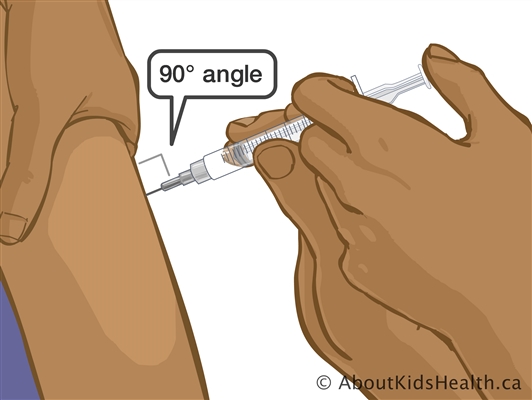Sweet Life: How Blood Sugar Affects Wellbeing
Glucose is a fuel that nourishes the muscles and provides the brain. When the body works as needed, the hormonal system maintains the blood sugar level almost at a constant level. And vice versa: in case of hormonal failure, glucose concentration increases or decreases sharply. Why does the sugar level jumps and what to do with it, we sort it out with experts: the chief doctor of the Medical Center network Medskan Dmitry Gornostoliev, a candidate of medical sciences, a doctor of sports medicine, an expert dietitian of the federal network of fitness clubs X-Fit Oleg Iryshkin and a certified trainer FPA by Vladimir Kuksov.

What is dangerous "high" sugar
Eating any food, not only sweet, increases the concentration of glucose in the blood. Normally, its level is from 3.3 to 5.5 mmol / l (when analyzing blood from a finger) and from 4 to 6.1 mmol / l (if blood is taken from a vein). These figures change throughout the day: for example, as soon as we eat a product that is high in carbohydrates — say, a bun, the level of glucose can literally rise to 10 mmol / l in twenty minutes. There are no health hazards in this: it is the so-called alimentary, or food-related, hyperglycemia - a temporary increase in blood glucose. If the pancreas and liver function properly, the indicators will return to normal after some time.
If the increase in glucose occurs more frequently and becomes chronic, then type 2 diabetes can develop. This is a serious disease - it leads to disturbances in the work of the heart and blood vessels, kidneys, eyes and other organs. Too high blood sugar levels are very dangerous in early pregnancy - it dramatically increases the risk of congenital heart disease in a child. Thirst, frequent visits to the toilet "in a small way", malfunction of the heart, cramps in the legs, skin itching, headache or dizziness, fatigue, blurred vision ("fog" before the eyes) - a set of symptoms indicating an excess of blood glucose is wide enough.
On the other hand, sugar is indispensable. More than half of the glucose goes to ensure that the body needs energy. The rest is used to build various structures — cell walls, enzymes, components of the immune system — and is stored in the muscles and liver. The level of glucose in the blood below the norm is called hypoglycemia - it can manifest itself as weakness or pre-fainting. When light hypoglycemia enough to drink a cup of sweet tea. In more severe cases, fainting or even hypoglycemic coma may be necessary, requiring urgent medical attention.
Often, hypoglycemia is encountered during workouts - for example, if a person decides to work out in the morning when blood sugar levels are low and forgot to have breakfast before that. In this case, experts advise to reduce the load, for example, to reduce the number of repetitions, or to complete the workout altogether. To avoid such conditions, it is important to eat one and a half to two hours before training. During class, it is important to prevent dehydration, the symptoms of which (dizziness, blackening of the eyes, tinnitus) are often similar to manifestations of hypoglycemia.
Why does sugar jump
Plant fiber (for example, from vegetables, herbs, whole grains) is a special type of carbohydrate that does not dissolve in water, is not absorbed by the body and does not affect blood sugar levels at all. Fats and proteins also do not generally increase the concentration of sugar; Although the individual components of the protein can be converted to glucose, it happens very slowly. It turns out that only carbohydrates can affect the blood level, with the exception of the fiber already mentioned. The glycemic index (GI) of each product is an indicator of how quickly food is absorbed and how much blood sugar levels rise. For example, baked potatoes, beer, and most products made from wheat white flour are the champions in the rate of increase in glucose levels.
According to nutritionist Oleg Iryshkin, due to such products, following a rapid increase in blood sugar levels, insulin is released in a dramatic manner - pancreatic hormone, which delivers glucose to muscle, liver and adipose tissue. At the same time in thirty or forty minutes, the feeling of hunger reappears. It is easiest to cover the worm with what is on hand: a chocolate bar, a cookie, a cake, and the release of insulin repeats. As a result, you have snacks all day, sugar jumps, and insulin produces new portions of glucose. This leads to alternation of vigor and loss of strength, and also contributes to the accumulation of subcutaneous fat.
Unrefined grains (quinoa, buckwheat, oats, spelled) and legumes (lentils, beans, chickpeas) give the opposite effect: the starch contained in these products is gradually broken down to glucose. Their glycemic index is low, and they increase blood sugar levels slowly, ensuring satiety longer - up to three to four hours. Therefore, a balanced diet containing proteins, fats and carbohydrates with a sufficient amount of fiber (about 25 g per day is about a plate of porridge from unrefined whole grains for breakfast and a large portion of lettuce at lunch), allows you to maintain normal blood glucose, avoiding sharp insulin emissions. If the three main meals are not enough, you can increase them to five or six, eating more often, but in small portions - this scheme helps not to overeat during breakfast, lunch and dinner.

Why so hard
Glucose is necessary for the brain to work and for the body to move. But it is important that it enter the blood gradually. When the body receives a powerful dose of sugar (for example, after a snack with a piece of cake), the glucose level rises instantly. In the first half hour it seems that the strength has increased, but then insulin begins to be actively produced. It binds glucose - and its blood level becomes lower than it was before eating. The result is one - a feeling of hunger and fatigue. In addition, sudden changes in the level of glucose - is stress, provoking anxiety and irritability.
Can I get hooked on sugar
A large number of fast carbohydrates, such as sweets, in the daily diet can become a bad habit. This is due to the fact that when sugar hits the tongue (when taste receptors are irritated) and the blood glucose level rises, the level of dopamine, a hormone that affects the pleasure center in the brain, increases. As a result, after eating sweet, a pleasant feeling arises - it was not for nothing that they called it pleasure. Doctor Dmitry Gornastolov notes that the human brain perceives dependence on sugar about the same as narcotic. But there is good news: to reduce the amount of sugar, or to give it up is completely within everyone’s power.
How do sugar substitutes work?
Sweeteners allow you to give the food a sweet taste, giving up sugar as such - although not all of them are good for health. Oleg Iryshkin advises to make a choice in favor of stevia - a natural product with a sweetish taste that does not contain carbohydrates, and therefore does not affect the level of glucose in the blood. Stevia can be added to different dishes and drinks. Another option is to replace sugar with maple, date syrups or Jerusalem artichoke syrup. They contain carbohydrates, but have a lower GI compared with sucrose, that is, they are absorbed more slowly. Of course, you do not need to drink syrups - you can only sweeten a little food or coffee. In the case of pre-diabetes and already developed diabetes mellitus, sugar substitutes containing carbohydrates should be discarded.
How to control glucose
A balanced diet is the main, but not the only way to control blood sugar levels. If you move a lot, your cells become more susceptible to insulin. Muscles consume a lot of glucose, and the stronger they are, the more glucose they need - and therefore, the body will not have the opportunity to put sugar in reserve. Personal trainer Vladimir Kuksov notes that physical activity is very important in diabetes. It helps to create a calorie deficit and improves insulin sensitivity. People with a confirmed diagnosis are recommended to exercise an average intensity, at least three times a week, for half an hour or an hour.
A full sleep at least eight hours a day is another condition for maintaining a normal level of glucose in the blood. When not getting enough insulin sensitivity decreases - and scientists still can not explain why. This is probably due to circadian (circadian) rhythms: when they are disturbed, problems with sugar metabolism occur in the body. A sharp jump in glucose in the blood can also cause strong emotions: in a stressful situation, it is necessary to act quickly - and the body prepares glucose for decisive actions. True, in the modern world, the resulting stress usually does not require physically active actions, such as fighting the aggressor or trying to escape - and the blood sugar level remains high. This is another argument in favor of regular workouts for those who stress a lot at work.
Photo: weixx - stock.adobe.com, mihalec - stock.adobe.com, Alexander Tarassov - stock.adobe.com





